Sunjin environment Co., Ltd., Korea's first waste refrigerant recovery · establishment of one-stop treatment facilities in a si
Author
admin
Date
2021-12-05 23:59
Views
845
- Securing 15 patents, including thermal destruction and harmless system of waste refrigerants.
- It signed an agreement to supply refrigerant treatment facilities (MOA) worth 10 billion won to Saudi Arabia.
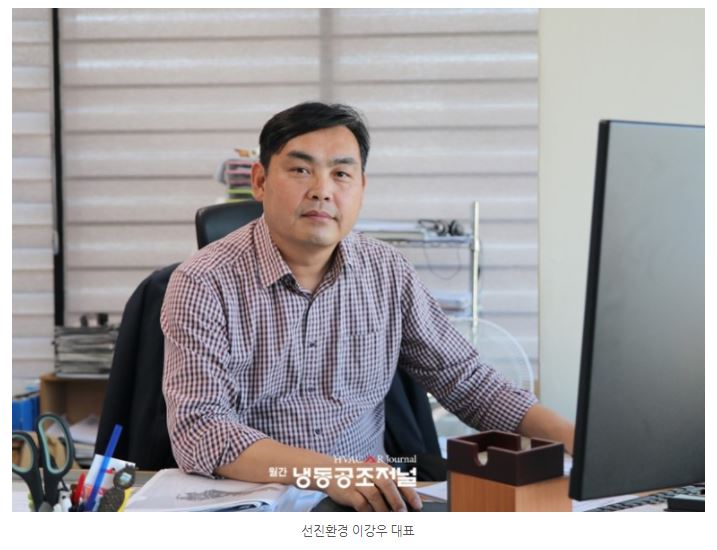
The waste refrigerant recovery/purification and thermal treatment plant of Sunjin Environment Co., Ltd. in the Saenggok Resource Circulation Complex in Gangseo-gu, Busan handles recycling and destruction of waste refrigerants in a single factory at the same time.
This is the first factory in Korea where waste refrigerant purification and thermal treatment are commercially operated in a one-stop.
On May 29 this year, the refrigerant return class registration system was implemented, and the factory, which provides total services for waste refrigerant treatment by registering as the No. 1 in Korea, is expected to contribute dramatically to reducing fine dust and greenhouse gases.
Korea's first new technology (NET) certification for waste refrigerant treatment technology.
Refrigerant is an essential material for the operation of refrigeration/refrigerator facilities or cooling air conditioners. However, as it has been identified as the cause of ozone layer destruction (CFCs, HCFCs refrigerant) and global warming (HFCs refrigerant), a lot of efforts are being made to establish a systematic management system to prevent leakage into the atmosphere around the world.
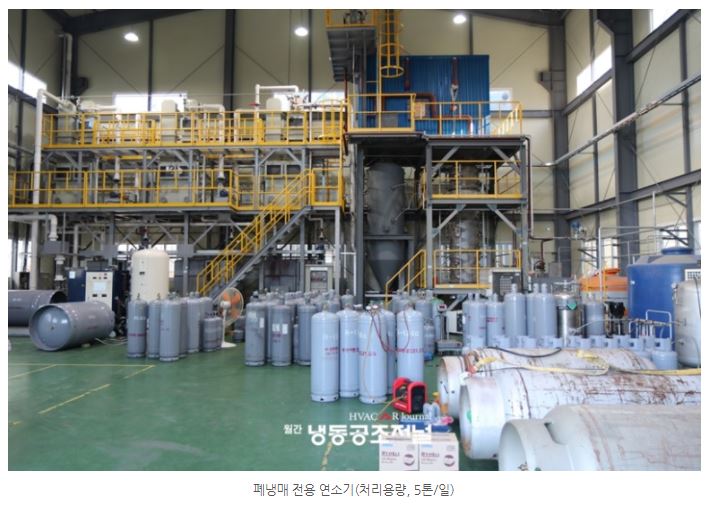
Sunjin environment Co., Ltd. is △ waste refrigerant treatment (recovery/refinery regeneration/renewable refrigerant sales/thermal destruction) △ refrigerant destruction facility plant EPC and operation engineering △ consulting such as waste refrigerant treatment-related projects △ refrigerant and refrigerant optimization operation technology advice.
Sunjin environment Co., Ltd. participated as the organizer of the Ministry of Environment's "Non-CO2 Greenhouse Gas Reduction Technology Development" national research project six years before refrigerant recovery was implemented and developed "waste refrigerant recovery, purification and thermal treatment one-stop treatment facilities."
At the end of 2017, a dedicated factory was completed in the Specialized Resource Circulation Complex (Saenggok-dong) in Gangseo-gu, Busan. A total of 6 billion won was invested, including R&D expenses, and 15 patents for original technology, including thermal destruction and harmless systems of waste refrigerants, were also secured. In particular, it has also obtained Korea's first new technology (NET) certification as a "waste refrigerant treatment technology" from the Ministry of Trade, Industry and Energy. The official name for which the new technology has been certified is 'waste refrigerant decomposition technology using air circulation injection for combustion'.
Not many companies have waste refrigerant recovery/purification and thermal treatment technologies at the same time in advanced countries such as the United States and Japan, and Sunjin environment Co., Ltd. is the first in Korea.
CEO Lee Gang-woo said, "Based on the results of commercialization of domestic refrigerant treatment, we are actively promoting the entry of domestic technology into overseas markets by signing an agreement with Saudi Arabia to supply refrigerant treatment facilities (MOA) of about 10 billion won."
5 tons of waste refrigerant can be destroyed per day. 10 tons can be regenerated.
Waste refrigerant treatment technology is a technology that stably destroys refrigerants that cannot be recycled due to technical or economic problems after removing impurities contained in waste refrigerants in consideration of resource circulation.
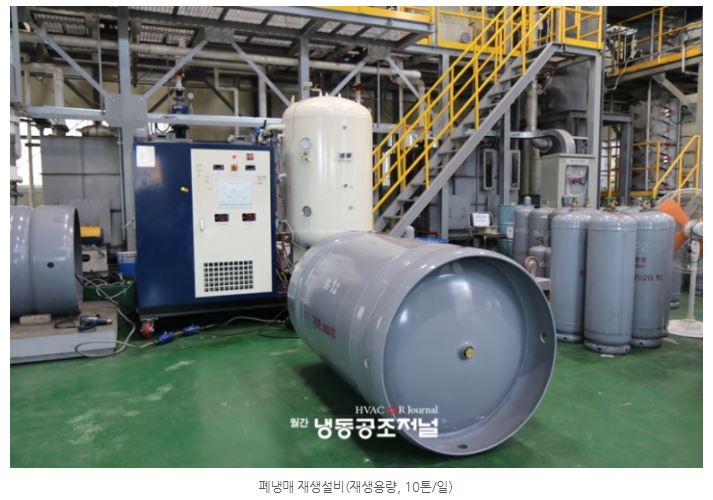
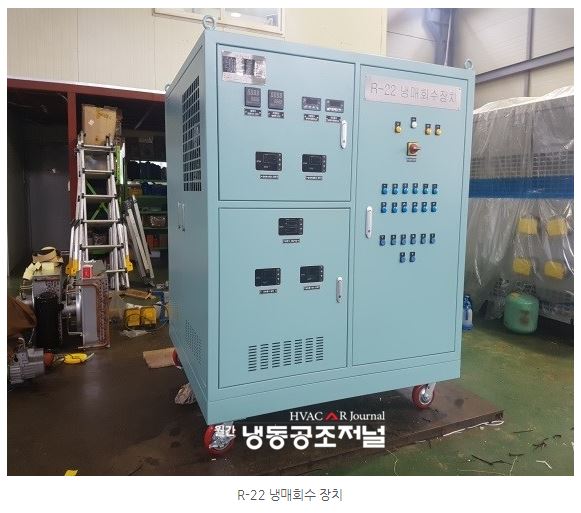
The facility built by Sunjin environment Co., Ltd. is evaluated as a dedicated combustion technology for waste refrigerants that can reduce energy use required to decompose thermally stable waste refrigerants in destruction of waste refrigerants including halogen elements such as fluorine (F) at high temperatures. The key technology is to cool the combustion chamber with combustion air instead of refractory construction and to improve energy efficiency by using preheated air as a waste refrigerant oxidant during the cooling process of the combustion chamber.
When combustion air is supplied to a flow path formed between the inner wall and the outer wall of the combustor, it is preheated by about 200°C or more while cooling the inner wall of the combustion chamber. The preheated air discharged into the combustion chamber rotates along the inner wall of the combustor and then joins the flame formed in the center of the combustion chamber to be used as an oxidant for combustion.
The lower part of the combustion chamber cools the combustion chamber using liquid waste refrigerant vaporization heat, and supplies the vaporized waste refrigerant into the combustion chamber for destruction treatment. At high temperatures above 1,000℃, the thermally stable decomposition rate of waste refrigerants was 99.99% or higher by mixing waste refrigerants, auxiliary fuels, and oxidants by Turbulence and securing sufficient residence time.
In particular, when cooling the combustion air using vaporized heat of the waste refrigerant and supplying it as an oxidizing agent, the temperature of the outer wall of the combustor is operated below the legal standard of 120℃.
Sunjin environment Co., Ltd. is the first in Korea to apply a dual-structure orbiting combustion method to handle 5 tons of waste refrigerant a day. In addition, the waste refrigerant regeneration facility may reprocess 10 tons of waste refrigerants (R-12, R-22, R-134a, R-410a, and R-407c) per day.
However, the current facility utilization rate is less than 30% of the processing capacity. According to the Air Environment Conservation Act and the Waste Management Act, all waste refrigerants should be recovered and treated by specialized companies, but the reality is that the amount treated is low at around 1%.
Currently, refrigerants stored in facilities are discharged as waste in the process of repairing or disposing of automobile air conditioners, household refrigerators/air conditioners, and industrial/commercial refrigerators, but most of the refrigerants are being stored or discharged to the atmosphere, Lee Gang-woo said.
According to the Basic Act of the Air Environment Conservation Act, management matters are recorded and preserved by owners of refrigerant devices, which are greenhouse gas substances, and recovery results are submitted semi-annually. Equipment with a daily refrigeration capacity of 20RT or more or more than 50kg of car collection is included in the management list and is obligated to collect and report refrigerants, and a fine will also be imposed if it is not observed.
However, laws related to the production, use, and disposal of refrigerants are distributed to Montreal's Protocol, the Framework Act on Resource Circulation for Electronic Products, the Air Environment Conservation Act, and the Waste Management Act, and are virtually neglected for difficult to manage or crack down on.
Since toxic substances are generated when disposing of refrigerants, waste must be generated when regenerating waste refrigerants, Lee Gang-woo said. "It is desirable to dispose of refrigerant waste by companies with both regeneration and destruction facilities."
As the system is still in the early stages of implementation, the market trend has yet to be felt, with operators' willingness to voluntarily fulfill their obligations or government authorities' management regulations falling short.
However, CEO Lee Gang-woo said, "If the supervision of computerized registration management of refrigerant management records is strengthened in 2019 and fines and penalties are imposed for non-fulfillment, the system is expected to be activated, but the will of the management supervisory authority will be an important indicator of business."
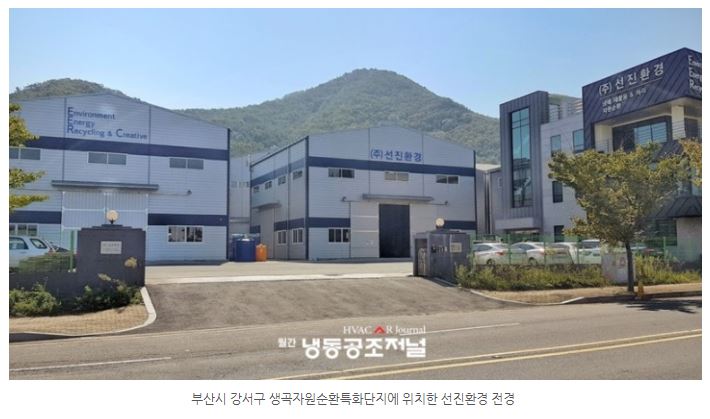
Continuous investment in research and development of more than 30% of sales, and has a large number of master's and doctorate-level research personnel.
Sunjin environment Co., Ltd. has the ability to consult optimization operations for refrigerant-use devices. Currently, it is establishing a cooperative network for waste refrigerant treatment after collection with about 300 registered refrigerant return registration companies. It also has the ability to provide total services to all refrigerant-related customers, including large refrigerator workplaces, major commercial household refrigerator air conditioner manufacturers, and electronics resource circulation centers.
Sunjin environment Co., Ltd. is a Ph.D. in environmental engineering and has master's and doctorate-level research personnel in the company, led by Lee Gang-woo, a technician, and invests more than 30% of its sales in continuous research and development. In addition, it is the first refrigerant-related new technology (NeT) in Korea from the Ministry of Trade, Industry and Energy through research projects, and is a company specializing in refrigerant treatment and environment that has applied and registered more than 30 patents. Recently, it has won orders for national research projects to develop original technologies to improve the atmospheric environment. Sunjin environment Co., Ltd. also plans to expand its refrigerant treatment plant in the Seoul metropolitan area in 2020 to focus its capabilities on waste refrigerant treatment projects.
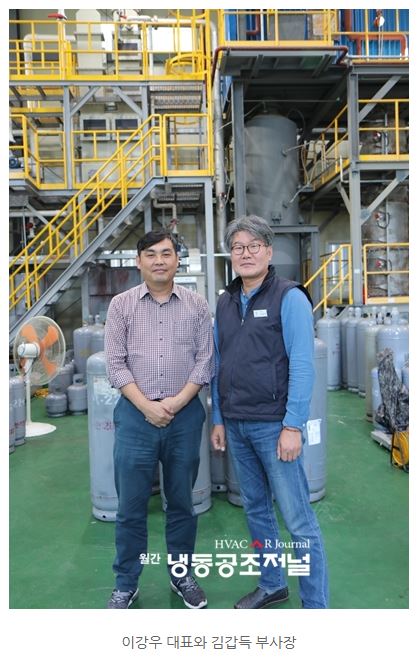
Lee Gang-woo, CEO of Lee Gang-woo, said, "Most of the refrigerant materials used for refrigeration, refrigeration and foaming are finite resources imported from foreign countries, and Sunjin environment Co., Ltd. is seeking value as a social company that protects the global environment through waste refrigerant treatment."
Reporter Sung Baekjin, sungbjin@hvacrj.co.kr
https://blog.naver.com/sungbjin/221700444146
- It signed an agreement to supply refrigerant treatment facilities (MOA) worth 10 billion won to Saudi Arabia.

The waste refrigerant recovery/purification and thermal treatment plant of Sunjin Environment Co., Ltd. in the Saenggok Resource Circulation Complex in Gangseo-gu, Busan handles recycling and destruction of waste refrigerants in a single factory at the same time.
This is the first factory in Korea where waste refrigerant purification and thermal treatment are commercially operated in a one-stop.
On May 29 this year, the refrigerant return class registration system was implemented, and the factory, which provides total services for waste refrigerant treatment by registering as the No. 1 in Korea, is expected to contribute dramatically to reducing fine dust and greenhouse gases.
Korea's first new technology (NET) certification for waste refrigerant treatment technology.
Refrigerant is an essential material for the operation of refrigeration/refrigerator facilities or cooling air conditioners. However, as it has been identified as the cause of ozone layer destruction (CFCs, HCFCs refrigerant) and global warming (HFCs refrigerant), a lot of efforts are being made to establish a systematic management system to prevent leakage into the atmosphere around the world.

Sunjin environment Co., Ltd. is △ waste refrigerant treatment (recovery/refinery regeneration/renewable refrigerant sales/thermal destruction) △ refrigerant destruction facility plant EPC and operation engineering △ consulting such as waste refrigerant treatment-related projects △ refrigerant and refrigerant optimization operation technology advice.
Sunjin environment Co., Ltd. participated as the organizer of the Ministry of Environment's "Non-CO2 Greenhouse Gas Reduction Technology Development" national research project six years before refrigerant recovery was implemented and developed "waste refrigerant recovery, purification and thermal treatment one-stop treatment facilities."
At the end of 2017, a dedicated factory was completed in the Specialized Resource Circulation Complex (Saenggok-dong) in Gangseo-gu, Busan. A total of 6 billion won was invested, including R&D expenses, and 15 patents for original technology, including thermal destruction and harmless systems of waste refrigerants, were also secured. In particular, it has also obtained Korea's first new technology (NET) certification as a "waste refrigerant treatment technology" from the Ministry of Trade, Industry and Energy. The official name for which the new technology has been certified is 'waste refrigerant decomposition technology using air circulation injection for combustion'.
Not many companies have waste refrigerant recovery/purification and thermal treatment technologies at the same time in advanced countries such as the United States and Japan, and Sunjin environment Co., Ltd. is the first in Korea.
CEO Lee Gang-woo said, "Based on the results of commercialization of domestic refrigerant treatment, we are actively promoting the entry of domestic technology into overseas markets by signing an agreement with Saudi Arabia to supply refrigerant treatment facilities (MOA) of about 10 billion won."
5 tons of waste refrigerant can be destroyed per day. 10 tons can be regenerated.
Waste refrigerant treatment technology is a technology that stably destroys refrigerants that cannot be recycled due to technical or economic problems after removing impurities contained in waste refrigerants in consideration of resource circulation.


The facility built by Sunjin environment Co., Ltd. is evaluated as a dedicated combustion technology for waste refrigerants that can reduce energy use required to decompose thermally stable waste refrigerants in destruction of waste refrigerants including halogen elements such as fluorine (F) at high temperatures. The key technology is to cool the combustion chamber with combustion air instead of refractory construction and to improve energy efficiency by using preheated air as a waste refrigerant oxidant during the cooling process of the combustion chamber.
When combustion air is supplied to a flow path formed between the inner wall and the outer wall of the combustor, it is preheated by about 200°C or more while cooling the inner wall of the combustion chamber. The preheated air discharged into the combustion chamber rotates along the inner wall of the combustor and then joins the flame formed in the center of the combustion chamber to be used as an oxidant for combustion.
The lower part of the combustion chamber cools the combustion chamber using liquid waste refrigerant vaporization heat, and supplies the vaporized waste refrigerant into the combustion chamber for destruction treatment. At high temperatures above 1,000℃, the thermally stable decomposition rate of waste refrigerants was 99.99% or higher by mixing waste refrigerants, auxiliary fuels, and oxidants by Turbulence and securing sufficient residence time.
In particular, when cooling the combustion air using vaporized heat of the waste refrigerant and supplying it as an oxidizing agent, the temperature of the outer wall of the combustor is operated below the legal standard of 120℃.
Sunjin environment Co., Ltd. is the first in Korea to apply a dual-structure orbiting combustion method to handle 5 tons of waste refrigerant a day. In addition, the waste refrigerant regeneration facility may reprocess 10 tons of waste refrigerants (R-12, R-22, R-134a, R-410a, and R-407c) per day.
However, the current facility utilization rate is less than 30% of the processing capacity. According to the Air Environment Conservation Act and the Waste Management Act, all waste refrigerants should be recovered and treated by specialized companies, but the reality is that the amount treated is low at around 1%.
Currently, refrigerants stored in facilities are discharged as waste in the process of repairing or disposing of automobile air conditioners, household refrigerators/air conditioners, and industrial/commercial refrigerators, but most of the refrigerants are being stored or discharged to the atmosphere, Lee Gang-woo said.
According to the Basic Act of the Air Environment Conservation Act, management matters are recorded and preserved by owners of refrigerant devices, which are greenhouse gas substances, and recovery results are submitted semi-annually. Equipment with a daily refrigeration capacity of 20RT or more or more than 50kg of car collection is included in the management list and is obligated to collect and report refrigerants, and a fine will also be imposed if it is not observed.
However, laws related to the production, use, and disposal of refrigerants are distributed to Montreal's Protocol, the Framework Act on Resource Circulation for Electronic Products, the Air Environment Conservation Act, and the Waste Management Act, and are virtually neglected for difficult to manage or crack down on.
Since toxic substances are generated when disposing of refrigerants, waste must be generated when regenerating waste refrigerants, Lee Gang-woo said. "It is desirable to dispose of refrigerant waste by companies with both regeneration and destruction facilities."
As the system is still in the early stages of implementation, the market trend has yet to be felt, with operators' willingness to voluntarily fulfill their obligations or government authorities' management regulations falling short.
However, CEO Lee Gang-woo said, "If the supervision of computerized registration management of refrigerant management records is strengthened in 2019 and fines and penalties are imposed for non-fulfillment, the system is expected to be activated, but the will of the management supervisory authority will be an important indicator of business."

Continuous investment in research and development of more than 30% of sales, and has a large number of master's and doctorate-level research personnel.
Sunjin environment Co., Ltd. has the ability to consult optimization operations for refrigerant-use devices. Currently, it is establishing a cooperative network for waste refrigerant treatment after collection with about 300 registered refrigerant return registration companies. It also has the ability to provide total services to all refrigerant-related customers, including large refrigerator workplaces, major commercial household refrigerator air conditioner manufacturers, and electronics resource circulation centers.
Sunjin environment Co., Ltd. is a Ph.D. in environmental engineering and has master's and doctorate-level research personnel in the company, led by Lee Gang-woo, a technician, and invests more than 30% of its sales in continuous research and development. In addition, it is the first refrigerant-related new technology (NeT) in Korea from the Ministry of Trade, Industry and Energy through research projects, and is a company specializing in refrigerant treatment and environment that has applied and registered more than 30 patents. Recently, it has won orders for national research projects to develop original technologies to improve the atmospheric environment. Sunjin environment Co., Ltd. also plans to expand its refrigerant treatment plant in the Seoul metropolitan area in 2020 to focus its capabilities on waste refrigerant treatment projects.

Lee Gang-woo, CEO of Lee Gang-woo, said, "Most of the refrigerant materials used for refrigeration, refrigeration and foaming are finite resources imported from foreign countries, and Sunjin environment Co., Ltd. is seeking value as a social company that protects the global environment through waste refrigerant treatment."
Reporter Sung Baekjin, sungbjin@hvacrj.co.kr
https://blog.naver.com/sungbjin/221700444146